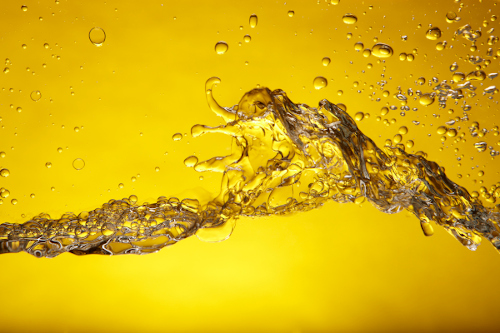Analysis of Oils – Part 2: Phenomenon of Boron Measurement Instability in ICP Testing

As we pointed out in our last post, boron is an oil additive that aids in lubrication. When performing oil condition monitoring (OCM) many aspects of the engine oil are evaluated to determine the health of the machinery and whether corrective action is needed. Monitoring the presence of oil additives is a key parameter in this testing, with boron being indicative of certain types of wear (as explained in further detail here).
VHG™ was receiving questions from customers on boron “dropping out” from commercially available working level standards, prompting the Research & Development team to initiate a study to determine the cause of this phenomenon.
The phenomenon of boron dropping out was seen across large and small labs, new lab operations and veteran laboratories. Interestingly enough, the same issue was also seen with our competitors’ multi-element metallo-organic mixes, which indicated that the problem was not due to a lack of analyst experience or end-user laboratory processes. And although boron testing in petroleum matrices can be performed by rotating disc electrode (RDE) or x-ray diffraction (XRF), the boron phenomenon was specifically isolated to ICP users (indicating that the problem was unlikely to be tied to the quality of reference materials provided).
For each reported instance of boron drop-out, the VHG team retested our lot retained from the customer’s original order. Each of these tests verified that the VHG material gave accurate results and continued to have acceptable recoveries to the certified concentration listed on the lot’s Certificate of Analysis. In the course of this reporting and testing, however, we noticed a seasonal component to boron drop-out which seemed to be linked to warmer temperatures. The longer diluted standards were exposed to the atmosphere, the more the boron dropped out. Higher humidity conditions also caused boron to drop out more significantly over shorter periods of time.
This phenomenon was causing frustration for end users, and ultimately triggering costly and time-consuming sample reruns. When you are trying to get a fighter jet back in the sky, or a mining operation back up and running, delays can be dangerous and expensive. In oil analysis, accurate and timely results are an essential component of ensuring safe operations.
In an effort to #GoBeyondTheStandard and help our customers solve this problem, as well as better understand the science behind it, we launched a research and development project to determine the root cause(s) of the drop-out, starting by attempting to recreate the phenomenon labs were seeing. On the first day the working level standards were prepared, as in our previous quality assurance testing, the percent recovery for boron was found to be acceptable (in this case measuring at 101% - see graph below). However, after just one full day of the sample being left open in the lab to atmospheric exposure, the percent recovery dropped significantly, just as our customers reported.

Next article we will explore this VHG R&D project in more detail. We know there are many variables involved with ICP analysis of metallo-organics, ranging from the type of raw starting material down to the diluent chosen by the end user. But what exactly was causing the boron to drop out over time in diluted standards, and how was it linked to the duration of time the working standard was left open?
Can’t wait to find out? Click here to download the full Analysis of Oils: Understanding Chemical Stability & ICP Matrix Effects technical paper.
